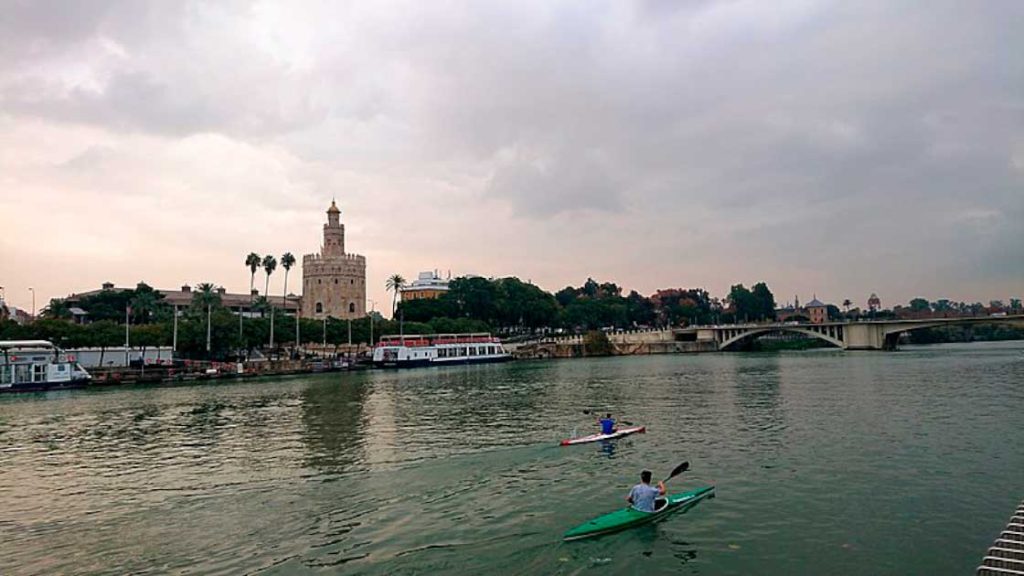The Spanish conquest of the New World was, ultimately, a catastrophe for Spain. 300 years of colonial rule saw Spain become increasingly dependent on the flows of wealth from the Americas, and eventually morph from a great power of Europe to something more stagnant and parasitic.
It is easy to see the temptations that led this to occur. As a result of the riches of her new territories, Spain initially became fantastically wealthy, but as with all sudden shifts in the social order this bought initial problems, too.
Something was needed to regulate how the Spanish interacted with the new territories. Something was needed to organize the flows of goods and money. And something was needed to ensure the crown got their cut, too.
The solution, introduced in 1503, was the Casa de Contratacion de las Indias, the House of Commerce of the Indies.
Taxes and Death
It was Queen Isabella of Spain who took the initiative, and she moved fast, founding the Casa only a decade after Columbus first crossed the Atlantic. Established in the southern Spanish city of Seville, its first master was Juan Rodríguez de Fonseca, who had overseen Columbus’s expedition and was clearly seen as a man who knew how to get things done.
The Casa not only served as the general overseer of trading between Spain’s new American possessions and Spain herself, but also had a much larger remit. Shipping routes and permission to sail to the New World was controlled by the Casa, as was control of the African slave trade, maintenance of royal revenues, and physical collection of taxes.
In theory, no Spaniard could sail their goods anywhere without the permission of the Casa. However, as you would expect this led instead to a sudden increase in smuggling and piracy, as is always the case when an institution decides to interject and ask for a cut.
- Alvar Nunez Cabeza de Vaca – Against all odds
- King Leopold II: The Biggest Cover-up in European History?
But the Casa had duties outside of revenues and taxes. It also started the process of mapping the Indies by establishing cartography and navigational school, which came to house detailed documents of Spain’s overseas territories.

Somehow it took the Spanish 200 years to figure out that having their main maritime customs house in Seville, an inland city, might not be the most efficient. In 1717, the Casa was moved from Seville to Cádiz on the coast, which is where the goods were coming in.
However, the Casa may have regulated income but as mentioned it also came to be the major, and then the sole, source of revenue for the Spanish upper classes and the crown. In 1790, with the Empire crumbling, the Casa de Contratación was finally abolished.
But it was too late. Spain was entirely dependent on South American revenues, and when in the next three decades the continent was liberated from Spanish rule, her economy collapsed. The Casa may have been a commendable attempt to regulate trade but it became the doom of Spanish colonialism.
How Did This Happen?
It all started with the giant boost in the Spanish economy with the discovery of America. The American colonies were viewed as the private property of the crown, and the Casa was designed to direct as much money as possible into the royal coffers.
But if you are going to tax the merchant ships, you need to know how many there are. Therefore all ships going to America were required to set sail from Seville down the Guadalquivir river, dock at only the ports they were permitted to access by the Casa, and then sail back to Seville.
In 1508, the explorer Amerigo Vespucci (yes, that Amerigo Vespucci), who had been managing a Florentine commercial office in Seville, was chosen to serve as the Casa’s principal navigator. Amerigo Vespucci was in charge of generating maps of the routes to foreign countries as well as issuing licenses to the ship’s captains.
- Fireships in the Night: How was the Spanish Armada Defeated?
- The Haitian Revolution: How Did an Enslaved Island Defeat Two Empires?
There were other problems with the system as well: pirates kept stealing the cargo and much went undeclared. As a result of this a defensive fleet was established to guide and guard against pirate ships as they travelled across the Atlantic, and the Casa also operated a naval yard, becoming quasi-military in operation.

Seville’s location was inconveniently far from the Atlantic and even further from the sizable harbor of Cadiz. This meant that, while the ships could easily go up and down the Guadalquivir to reach Seville, the captains often preferred to offload their goods in Cadiz at 0% tax rather than Seville at 20% (or 40% if you want protection).
But nonetheless there was so much pouring into the country that the Spanish crown became extraordinarily wealthy. Wheat, olives, leather items, and ceramics were exported out to America. Massive (and destabilizing) amounts of gold and other precious metals moved the other way, especially after the mines of Mexico and Bolivia began to operate in the 1540s.
The annual influx of precious metals increased in Seville from one million pesos in 1530 to more than 35 million by 1595. Throughout these many years, Seville experienced an influx of both people and wealth, and it became the biggest and richest city in Spain and one of the richest in all of Europe by the year 1600.
With all this money, the revenues from the Casa dwarfed Spain’s entire pre-existing economy.
A Royal Institution
As the Casa de Contratacion grew it took on some specific functions outside of revenue monitoring, taxation and fleet defense. It became a proxy logistics hub for the bureaucracy of Spain and her empire, a court of law, an academic and scientific institution, and a sponsor of exploration.
Its legal powers meant it operated as a conflict management or resolution system directly responsible for resolving trade disputes in the New World. Its role as a logistics hub led to it directly organizing fleets to the Americas, reducing the number of maritime accidents to minimize revenue losses.
But this was not a sustainable system. By the end, Spain had taken everything the Americas had to give, and had forgotten how to operate without this wealth. By the time the Casa closed the writing was on the wall. Spain’s wealth bankrupted her.
Top Image: The Casa de Contratacion in Seville. This building, known today as the Archive of the Indies, holds most of the remaining documents from 300 years of fiscal stranglehold. Source: Annual / CC BY 3.0.
By Bipin Dimri